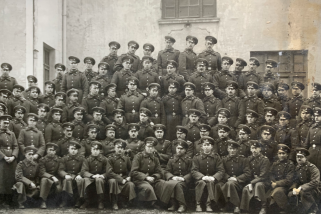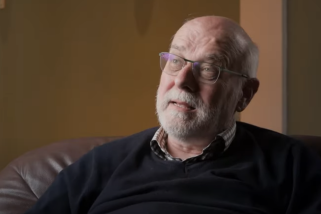Underground Space: Development, Exploration, Secondary Use
Vasylivka-Zaporizhia, Ukraine, 25-26th September 2015
APPLICATION DEADLINE is 30th July 2015.
With the support of European Society for Environmental and History Vasylivskyi
Historical-Architectural Museum-Reserve “Popov’s Country Seat”, Ya.Novytskyi Zaporizhia
Scientific Society and Historical DepNuclear powerartment of Zaporizhia National University are pleased to
announce a two-day conference in environmental history of underground space.
Today the question of the underground space development is quite relevant, but for the
most part it is the focus of urban planners and architects who are involved in the elaboration of
the projects and recommendations for the growth of cities deep down. The reasons for inventing
more and more new technologies are increasing of number and density of population,
acceleration of the urbanization processes, forming of megalopolicies etc. In the majority of
developed countries research centers are being established, scientific conferences are being hold,
which allow to invent new approaches to the space usage. However, the development of the
underground space is not necessarily related to the cities. Taking everything into account, the
organizers offer to pay attention to the various approaches to the development and exploration of
the underground space in the country and city, mountains and steppes, Ukraine and the whole
world in different epochs.
The interaction of human and the underground was arisen in the ancient times when mainly
the question of domestic use of the underground space was considering. The main attention will
be focus on the historical retrospective of the development and exploration of the underground
space at the conference. Why did people pay attention to the underground? What were the
reasons for the usage of the underground space? Did people use natural hollows or create it
themselves? Whether were the functions of the underground changed? How did people influence
on the underground space? Did they damage the natural environment or find the compromise
with it? In what way the knowledge of the underground was developing?
The feature of human interaction with the underground space is its secondary use. The
conference organizers draw special attention to it. What were the functions of former mines,
tunnels, trenches, catacombs? Is it reasonably to include the underground to the tourism
industry? What are the ways of the underground space museumification?
Vasylivka of Zaporizhia region where the underground space had been being actively used
by human from the ancient times was chosen as the venue of the conference. The kurgans and
burial grounds on the territory of Lysa Gora, catacombs for the extraction of limestone that has
been being used as touristic object, abundant underground utilities in the Popov’s palace of 19th
century etc are the evidence of intensive use of the underground space in Vasylivka.
There are no chronological and territorial restrictions of the participants’ repots. We
encourage regional and comparative studies with the use of nontraditional methods of
investigations.
Issues to be discussed during the conference include, but are not limited to:
The practices of the undergraduate exploration in ancient times
Burial and cemeteries
Household use of the underground space
Underground and extraction of mineral resources
Nuclear power and the underground
City and the undergraduate space
Transport infrastructure under the ground
Vaults of the estates and their functions
Military conflicts and safety under the ground
Religious, cult and clandestine objects under the ground
Underground architecture
Underground space, impact on the ecology and protection of the natural
environment
Medical, touristic and household secondary use of the underground space
Scientific exploration of the underground space (mapping, technology and
methodology of the underground construction development, the impact of scientific and
technological revolution on the development of the underground).
The participation of historians, archeologists, architects, ecologists and representatives of
other disciplines at all stages of their career are expected to achieve interdisciplinary contacts.
To take part in the conference, send to olenenkoag @ ukr.net next papers:
1. CV with necessary contact information.
2. Brief abstract of report (no more than 200 words).
The conference consists of plenary session and paper sessions. Papers have to be not more
than 15 minutes each. At the end of each session there will be sufficient time for general
discussion. The working languages are Ukrainian, Russian and English. We are planning to
publish reports of the participants after the conference.
There is no fee. It is intended the intense excursion program. All accepted participants will
receive free room and board during this conference. Participants are responsible for their own
transportation to Zaporizhia, but thanks to the support of European Society for Environmental
History limited travel funds may be available. Travel between Zaporizhia and the conference
venue is covered by the organizers.
Contact person: Anna Olenenko olenenkoag @ ukr.net.













